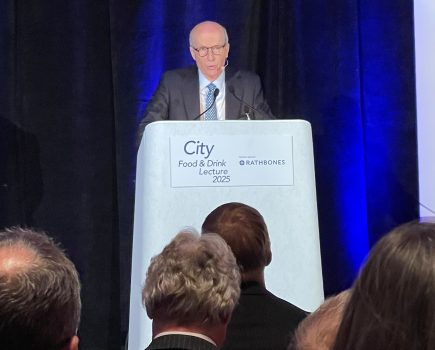In the past month there’s been a lot of politics but very little new grain business transacted. The ‘safe corridor’ for Ukrainian grain exports was duly extended and now the next deadline of 19 May looms. This will cause more market volatility as it approaches, but it’s no longer the game changer it was in June and November last year. Ukraine does not have much left to export anyway. Russia will, however, use this for political brinkmanship. They will re-iterate their demands that trade and financial sanctions imposed by the west are lifted or they will close the corridor. Of course, neither of those things will happen.
A much bigger political upset was caused by Ukraine’s western neighbours Bulgaria, Hungary, Romania, Slovakia and Poland all wishing now to ban imports from Ukraine as they are causing their internal grain markets to fall further in value. Most of these countries have plenty of stocks and really don’t want any more. Well, so much for the united front of the EU in supporting Ukraine; this must be music to President Putin’s ears! The EU is finding some money to partially compensate farmers in these member states, but I doubt it will prevent farmers blockading Ukrainian imports at their borders.
The next bit of politics to have an adverse effect is a long way from Ukraine, in Australia and China. It’s not certain, but it looks like China is going to lift the import tariff sanctions they placed on Australian barley back in 2020. France has been the main beneficiary of this, with a lot of big Panamax boats of French feed and malting barley being shipped to China. Just the strong rumour of this rapprochement caused French barley to fall 20 euros per tonne, especially around the big ports like Rouen. While the UK could not directly take part in the Chinese trade, as we don’t have the protocols, the knock-on effect of a strong French barley export trade has helped the UK, especially with malting barley export markets.
The next huge, non-fundamental factor has been the hedge funds. There are not many of them, but they certainly trade a lot of futures on paper. At the last count there were countless millions of wheat contracts sold short, mostly on the America Chicago futures. In some cases they have traded more than the actual tonnage that the wheat crop produced! But you must give them credit because whether or not their constant selling down of the futures created a self-fulfilling prophecy, they have got the market right. Of course, we won’t know what other commodities they had been buying as a hedge, but on paper their short selling has made them a lot of money.
Coming closer to home, all this speculation has really blown the age-old relationship between futures and cash or physical prices. Take our old crop May futures position. It was hammered again in mid-April down to £190 as long holders got out of expensive purchases before physical tenders arrive. But that was anything from £14 to £19 below the November 2023 futures price. Well one of them is wrong! Either the old crop is too cheap or the new crop too dear. They usually reach parity before harvest, so will old crop go up, or new crop come down? Some futures store operators may well be selling the November rather than taking the low May value and rolling their wheat forward. That’s not as straightforward as it sounds, but a farmer who is a long holder of old crop may well consider it’s worth the risk of leaving it in store. Normally if you do that the new crop price should be sold now, in case when the prices do come together the new crop has fallen to the old value.
It is confusing that most exporting countries seem to be discovering more stocks of old crop than they thought they had. This is often coupled with others reducing export demand as well, so it’s little wonder prices have fallen. Our own crops look good. Yes, there have been growing issues around the world, but the only real residual one which will affect us is Spain, where by mid-April there had been little rain since January.
So, as I said, lots of politics and very little trade. I asked many editions ago: “What is the real price of UK wheat?” I said then it could be £200. Well, if it is then the forward new crop price reflects that value. Being weaned off the heady values of the past 18 months is difficult, but maybe you need to make that first line in the sand. My view remains that the current old crop futures-related value is not the real price of wheat, so I would not sell until the May futures are off the board. But, in case I am wrong, the stock exchange adage of “sell in May then go away” may apply to new crop.
For more like this, sign up for the FREE South East Farmer e-newsletter here and receive all the latest farming news, reviews and insight straight to your inbox.







